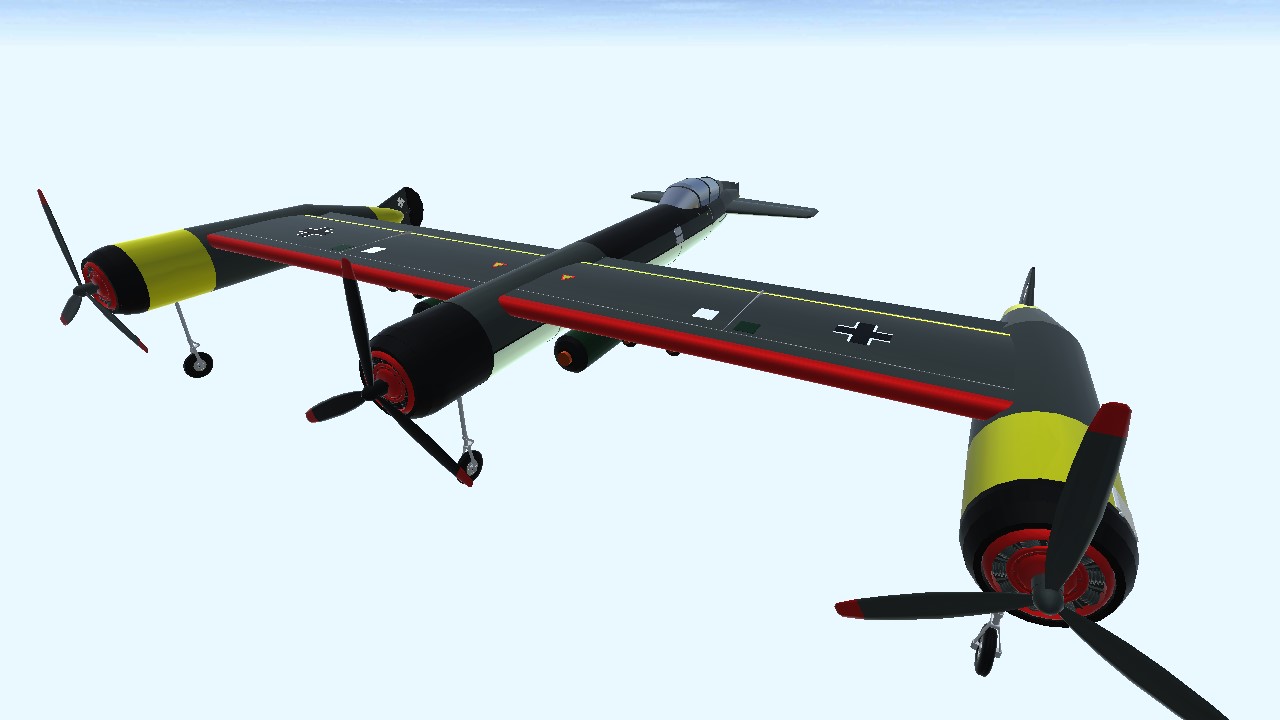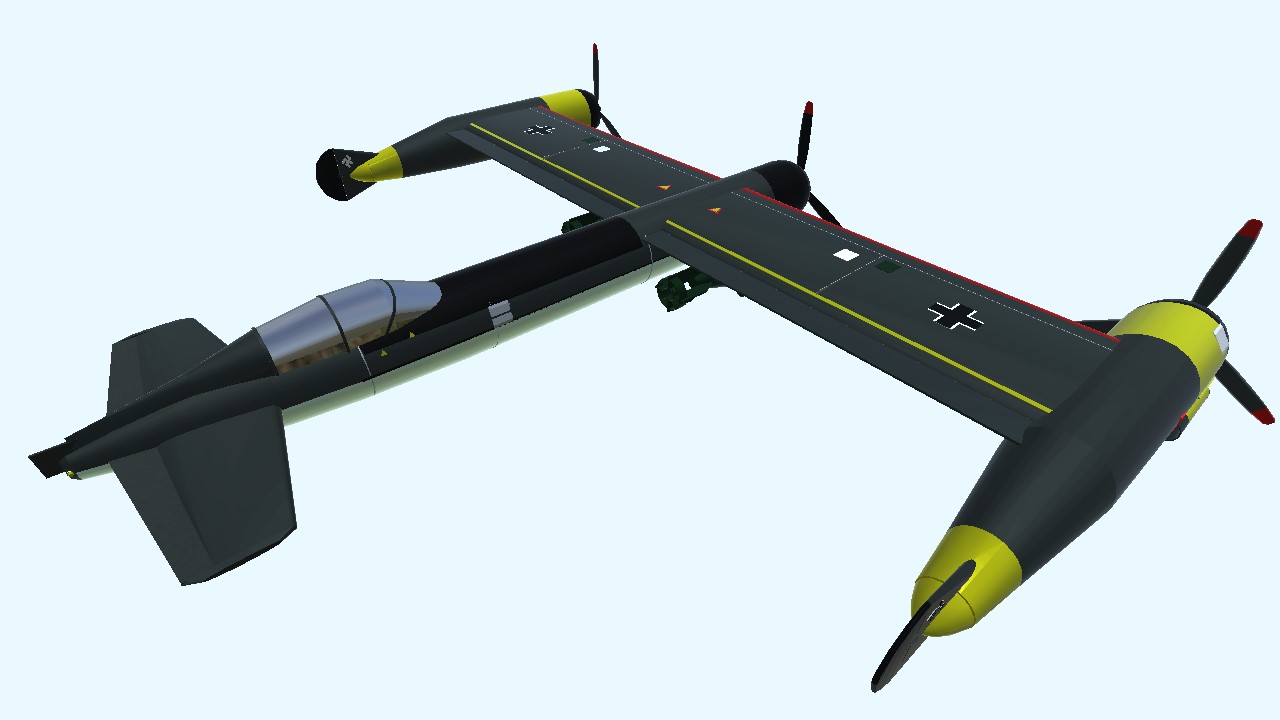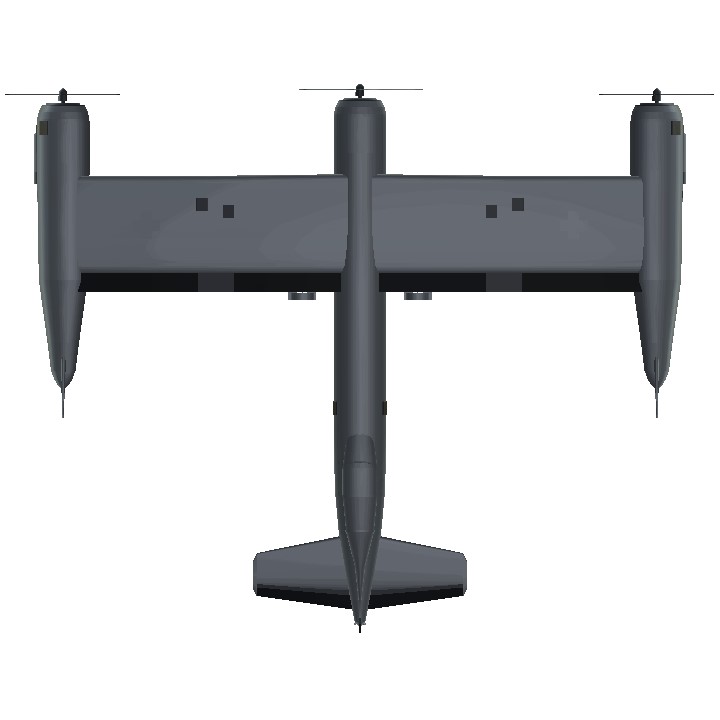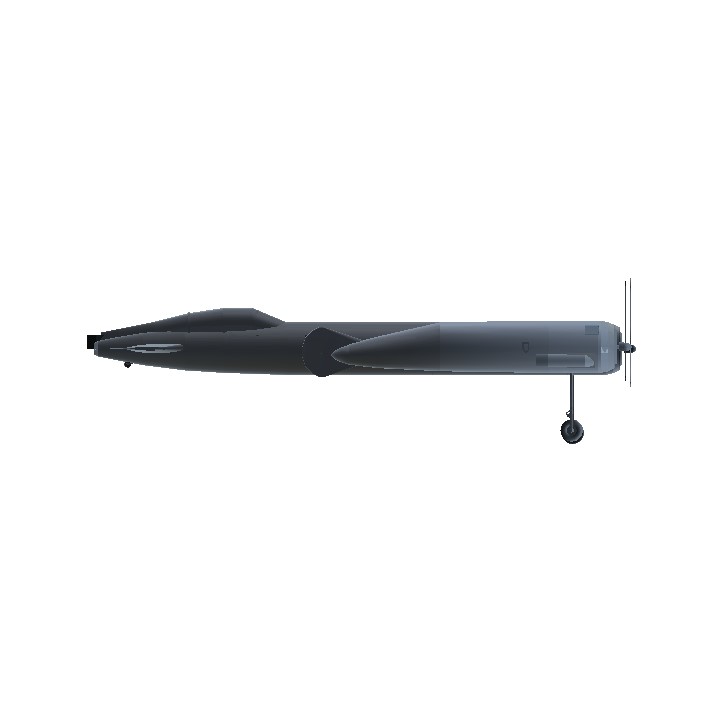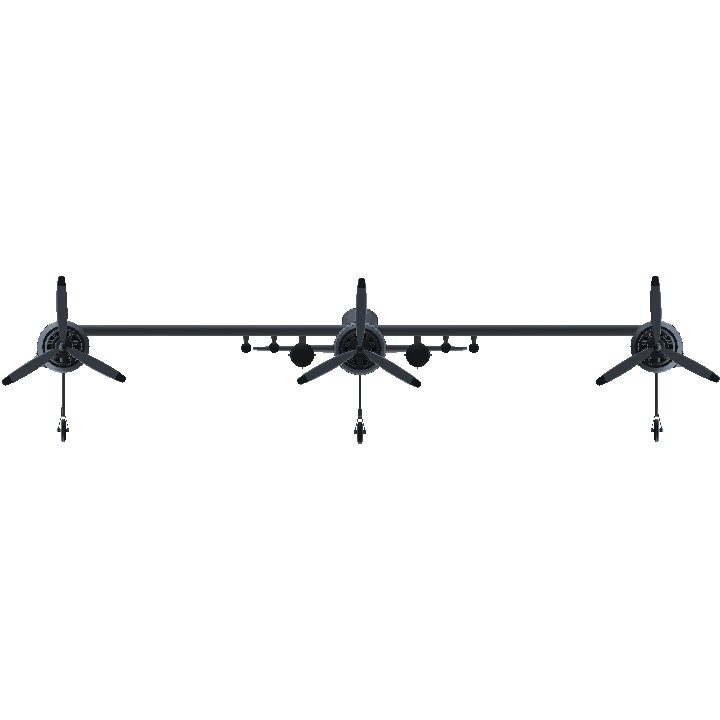This fighter-bomber was designed by Dr. Vogt of Blohm und Voss in 1942, designer of the BV 141 and other asymmetric designs. Although the BV P.170 was of a symmetrical design, it was still unorthodox in appearance. The wing was of constant chord, and contained the ailerons and landing flaps, which were to be constructed of wood or a light metal. Three BMW 801D radial engines (rated at 1600 horsepower each) provided the power; each drove a three-bladed 3.5 m (11' 5") propeller. One engine was located on the front of the main fuselage, while the other two were mounted on wingtip gondolas, each with a single vertical fin and rudder located at the rear. Each engine gondola (including the center fuselage) contained a 2000 liter (528 gallon) fuel tank, which could only feed the engine ahead of it. The two outside engines rotated in opposite directions, to help cancel out excessive torque. The two man crew (pilot and radio operator/ observer/ bombadier) sat in a cockpit located in the extreme rear of the center fuselage, of which there were two main designs. A normal "tail-dragger" undercarriage was fitted, with the exception of there being three main landing gear legs (1015 x 380 mm wheels were to be fitted to each leg), one located just aft of each engine. Each main landing gear leg retracted to the rear into the engine nacelle or main fuselage. 2000 kg (4400 lbs.) of bombs could be carried in underwing mountings. The project's speed was thought to preclude interception, thus no defensive armament was to be fitted.
Specifications
General Characteristics
- Created On Android
- Wingspan 84.2ft (25.7m)
- Length 63.5ft (19.4m)
- Height 19.6ft (6.0m)
- Empty Weight 23,017lbs (10,440kg)
- Loaded Weight 29,282lbs (13,282kg)
Performance
- Horse Power/Weight Ratio 0.614
- Wing Loading 31.3lbs/ft2 (152.8kg/m2)
- Wing Area 935.8ft2 (86.9m2)
- Drag Points 22254
Parts
- Number of Parts 268
- Control Surfaces 8
- Performance Cost 1,233

